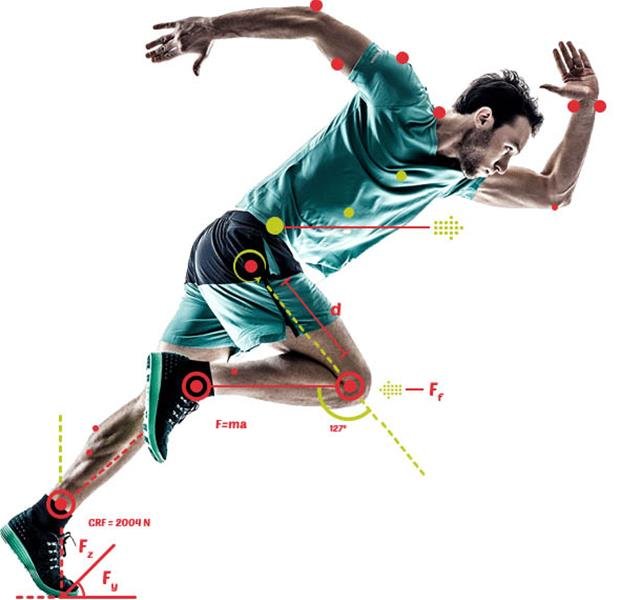Explore the fascinating connection between physics and sports, where understanding concepts like trajectory and aerodynamics helps athletes push their limits. From a basketball’s flight path to a cyclist’s speed, physics plays a crucial role in enhancing performance and achieving extraordinary feats.

The Role of Physics in Sports
Physics is the foundation for understanding motion, force, energy, and momentum—all of which are essential in sports. Here are some key principles and their applications:
1. Newton’s Laws of Motion
- First Law (Inertia): A soccer ball remains stationary until a player kicks it, applying force. Once in motion, it continues until friction, air resistance, or another force acts upon it.
- Second Law (F = ma): The force applied by a tennis racket determines the acceleration of the ball. A stronger swing results in a faster-moving ball.
- Third Law (Action-Reaction): When a sprinter pushes against the starting blocks, the blocks push back with an equal force, propelling the athlete forward.
2. Projectile Motion
- In sports like basketball, javelin, and soccer, the arc of a projectile is crucial. The angle, speed, and height of release determine the projectile’s trajectory. For instance, a basketball shot typically follows a parabolic path, and the optimal release angle is around 45 degrees for maximum range.
3. Friction and Grip
- Athletes rely on friction for control and stability. Runners use spiked shoes to maximize grip, while bowlers in cricket or baseball adjust their grip to influence spin and trajectory.
4. Aerodynamics
- Cyclists and swimmers reduce air and water resistance by adopting streamlined postures and wearing specialized gear. For example, aerodynamic helmets and tight-fitting suits minimize drag, allowing athletes to move faster.
5. Conservation of Momentum
- In collisions, such as tackles in rugby or hits in hockey, the principle of conservation of momentum explains how forces are transferred between players or objects.
Technology Meets Physics
Modern advancements in sports technology leverage physics to optimize performance and safety:
- High-Tech Equipment: Carbon-fiber bikes, lighter tennis rackets, and advanced running shoes reduce energy loss and improve efficiency.
- Biomechanics Analysis: Motion-capture systems analyze an athlete’s movements, identifying inefficiencies and suggesting improvements.
- Simulations and Modeling: Computational tools simulate conditions like wind resistance or ball trajectory, helping athletes prepare for real-world scenarios.
Interesting Read
Case Studies in Physics and Sports
The Perfect Golf Swing
Physics explains the importance of torque, angle, and force in achieving the perfect golf swing. By optimizing these factors, players can achieve maximum distance and accuracy.
Swimming: The Science of Drag Reduction
In competitive swimming, minimizing drag is crucial. Swimmers use streamlined body positions, while modern swimwear reduces friction with water, inspired by the skin of sharks.
Baseball: The Curveball
The spin of a baseball creates differences in air pressure, causing the ball to curve. This phenomenon, known as the Magnus effect, gives pitchers a strategic advantage.
Fun Facts About Physics in Sports
- Backspin and Lift: In basketball, adding backspin to a shot increases the chances of scoring by softening the ball’s impact on the rim.
- Pole Vaulting: Pole vaulters convert kinetic energy into elastic potential energy, propelling themselves over the bar.
- Bobsledding: Gravity and friction play critical roles, and the weight distribution within the sled affects its speed and stability.
Conclusion
The intersection of physics and sports is a testament to how science enhances human potential. By understanding the principles of motion, force, and energy, athletes and coaches can refine techniques, improve equipment, and maximize performance. Next time you watch your favorite sport, take a moment to appreciate the incredible physics at play behind every move, jump, and throw.


